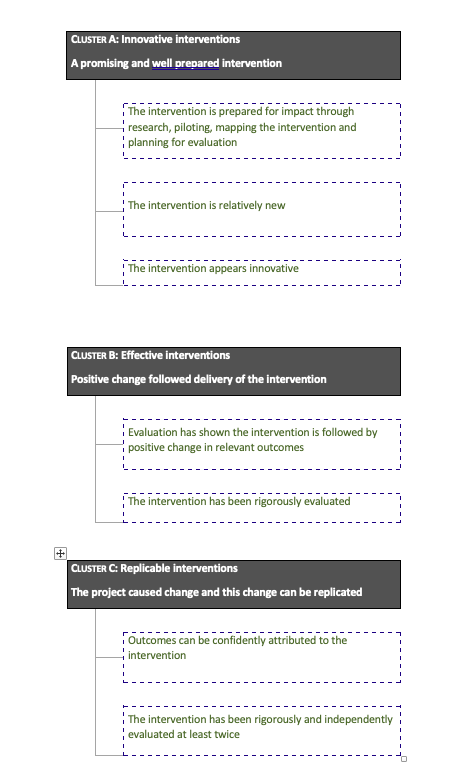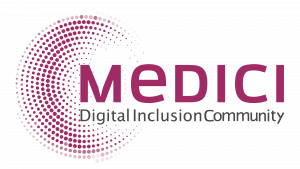You need to register to become a member. You can sign in with your Google of Facebook credentials or create a new account in the Registration page
- You can upload good practices in digital inclusion by filling in a submission form.
- You can participate in the community Forum
- You can open up new discussion threads in the Forum.
- You can create (closed or open) groups of discussion about a special theme or in your own language
- You can participate in our Webinars
- You can enjoy our Learning opportunities (podcasts, videos, resources)
- You can get access to the continuously updated content (videos, documents) on digital inclusion
A collection of 200 good practices in Digital Inclusion in the 27 Member States and the UK, visually displayed in a Map and available in a narrative description in the Catalogue (choose Cards and Catalogue in the Options Dashboard of the Map).
As a member, you will get regular updates about the incoming events in the Community page, including webinars. If you miss a webinar, you can visit the webinar repository and watch the recording.
Go to the General Forum and fill in the form to add a new topic
If you wish to create a Group please contact transfer.ict@unir.net and we will create the group for you. You can have open and closed groups, public and hidden groups. Groups are useful to discuss specific themes that are relevant to a small part of the community.
Please contact KCmedici@gmail.com
If you need technical assistance or detect bugs, please contact transfer.ict@unir.net
By clicking on Map in the main menu, you can get access to the MEDICI Map and Catalogue. In the map, the cases are visually displayed.
By clicking on Cards, you have access to a summary of the case.
By clicking on more information, you can get access to the full description of the case.
Alternatively, you can click on catalogue and you will have then the full list of cases displayed, with the possibility to get the in-depth analysis of each case by clicking on the “load” icon.
You can ask them to become friends, and then you can launch discussions with them in the Forum or even establish a Group, that can be open or closed.
You can propose your case to be part of the MEDICI Map and Catalogue by filling in the form that you can find in the Menu, under the Community item (upload good practice).You must be logged in (and registered as a member) to be able to upload your case.

You can propose your case to be part of the MEDICI Good Practice Catalogue by filling in the form that you can find in the Menu, under the Community item (upload good practice).You must be logged in (and registered as a member) to be able to upload your case.

In order to be shortlisted for inclusion in the MEDICI Catalogue, your project/initiative will have to comply with the following criteria:
| Domain relevance – the practice focuses on digital inclusion (connectivity, usage capability, quality of use) |
| Target groups – the practice covers one or more of five vulnerable groups: people with disabilities; elderly people; marginalized young people and children; unemployed or those facing social problems; migrants |
| Good practice – the practice has produced good results and deserves to be shared so that a greater number of people can learn from it and adopt it |
| Type of good practice – the practice provides information and learning on practices, tools, technology, standards, infrastructure or capacities. |
Our team will analyse your case and you will be contacted for more information to assess the suitability of your case for the MEDICI map and catalogue. Until your case is accepted in the Catalogue, you will be able to see it in the Digital Inclusion Stories Space.
Cases that are not relevant to Digital Inclusion, do not address our target groups or are very old will not be displayed, nor considered for shortlisting.
Please go to https://digitalinclusion.eu/members and you will find the list of members. You can then add as friends the members you are more interested in.
You can find them here https://digitalinclusion.eu/webinars-repository/
To know more about the MEDICI project, please visit the website: https://medici-project.eu/
The Main Catalogue and map represents the ‘state of the art’ in Digital Inclusion ‘good practices’: European projects and interventions for the Digital Inclusion of vulnerable groups.
The catalogue includes a grouping regime for cases referred to as ‘clusters’ A, B and C, detailed below. In addition, the replicability level of cases is assessed

It is automatically sent to the MEDICI case assessment team who carry out an initial assessment of the case for suitability, and to decide whether the information provided makes it look like it may qualify for inclusion in the catalogue and map . You may be asked for more information, before it is fully validated and if it meets the entry standards, it enters the catalogue and goes live on the map. In the meantime, or if the case is not yet sufficiently developed for catalogue visibility, it will be showcased in the Digital Inclusion Stories Space
The rating in the Digital inclusion stories space is done by the Knowledge Community members. Cases are rated from 1 (lower) to 5 (higher) based on the following criteria:
- the extent to which members find the case useful
- the extent to which members find the case innovative
- the extent to which members find the case inspirational
The catalogue includes a grouping regime for cases referred to as ‘clusters’ A, B and C. The rating is explained below and is given by the MEDICI validation team based on a set of established criteria.

Cases that make it into the catalogue and onto the map have been running long enough and have some evidence to suggest that they have made or will make a difference to the digital exclusion of vulnerable groups.
The kinds of good practices included in the Catalogue are practises that can show that they can make a difference.
The vulnerable groups covered in the MEDICI Catalogue are:
- People with disabilities
- Elderly people
- Marginalised young people and children (based on socio –economic status)
- Unemployed or those facing social problems
- Migrants.
The Catalogue and Interactive Maps provides users with good practices that:
- provide them with knowledge about what works, for whom and in what circumstances
- provide them with learning they can transfer and apply in their own context
- enable them to see gaps in the provision of initiatives to tackle the digital exclusion of vulnerable and disadvantaged groups.
The Digital Inclusion Stories Space is an incubation space for the main catalogue, a space where members can inspire, comment and vote on cases that are showcased there. Catalogue and map inclusion requires some evidence that a case may or already is making a difference to the Digital Exclusion of vulnerable groups in Europe.
Good practice cases that are active now or in development may be showcased in a ‘catalogue incubation’ space called ‘Digital Inclusion Stories’ within the Knowledge Community, even if they don’t yet have sufficient evidence for inclusion in MEDICI’s robustly validated ‘state of the art’ catalogue and map. Basic eligibility and catalogue validation criteria are as outlined below. Good practice case submissions need to be addressing the ‘digital inclusion’ of vulnerable groups. New cases submitted by MEDICI’s Knowledge Community members will appear first in the ‘Digital Inclusion Stories’ space, whilst full validation assessment for catalogue entry is carried out.
| Inclusion criteria elements the practice must have to be included in the Catalogue |
| Domain relevance – the practice focuses on digital inclusion (connectivity, usage capability, quality of use) |
| Target groups – the practice covers one or more of five vulnerable groups: people with disabilities; elderly people; marginalized young people and children; unemployed or those facing social problems; migrants |
| Good practice – the practice has produced good results and deserves to be shared so that a greater number of people can learn from it and adopt it |
| Type of good practice – the practice provides information and learning on practices, tools, technology, standards, infrastructure or capacities. |
The Main Catalogue and map represents the ‘state of the art’ in Digital Inclusion ‘good practices’: European projects and interventions for the Digital Inclusion of vulnerable groups.




